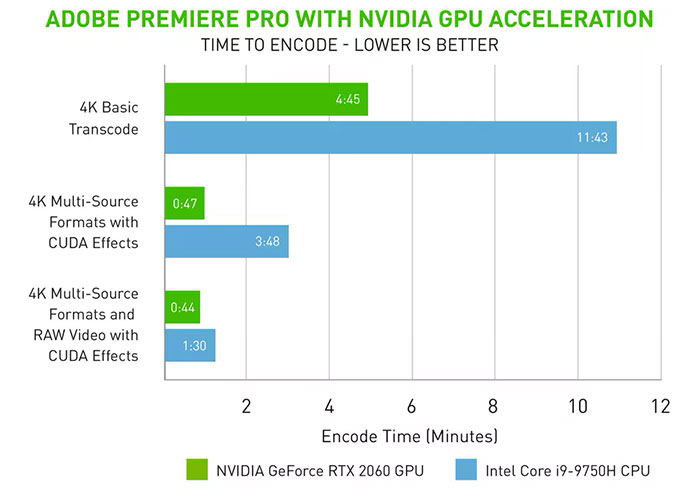The Adobe Max 2020 virtual conference is currently taking place. The event kicked off yesterday and of a plethora of updates and innovations was unveiled for popular industry standard creative tools such as Adobe Premiere, Photoshop and Illustrator.
"Visualizing ideas, sharing stories and expressing whatever’s in the mind’s eye are more important now than ever," summed up Scott Belsky, chief product officer and EVP of Creative Cloud, Adobe. "We're excited to introduce creative apps and services built to fuel continued growth for creative professionals, while also outfitting novices who want simple tools that bring their ideas to life."
One of the particularly demanding creative tools often at the core of productivity benchmarks is the Adobe Premiere video editing software. A number of updates have appeared for this at Adobe Max. Version 14.5 of Premiere Pro includes features like; colour management for ARRI ProRes formats, support for HDR workflows using the Rec2100 PQ colour space, import support for ProRes RAW on Windows accelerated by Intel and AMD GPUs, and the introduction of ProRes RAW to LOG colour space conversion.

For those that spend a lot of time in Premiere Pro perhaps one of the most welcome changes may be the performance gains now available due to AMD and Nvidia GPUs hardware decoding support. In v 14.5 Premiere Pro on Windows "offers faster playback and more responsive Timeline performance for the widely used H.264 and HEVC formats". The same acceleration has been implemented in After Effects too.

For an example of the performance improvements available to people with supported GPUs, The Verge reported a 52 per cent 4K video export time reduction.
Last but not least Adobe has implemented faster audio pre-roll in Premiere Pro provides responsive playback for large projects or projects that use a lot of audio effects. Next year this video editor is getting Speech to Text to transcribe videos.
Image editor Photoshop adds new Neural Filters, Sky Replacement, Discover panel (contextual help), and two new Refine Edge Selections improvements - all built on Adobe Sensei artificial intelligence and machine learning tech. Nvidia has published a blog post about how Nvidia GPUs can accelerate the latest Adobe Photoshop Neural filters.
One particular new feature that seems to have caught the tech headlines is the Photoshop implementation of Adobe's attribution tool. In brief this tool, which will be rolling out across the Adobe creative suite, allows Photoshop users to add their name, location and edit history to photos, among other tags. The purpose is to create a 'tamper evident' paper trail for images and the tool allows pixel peepers to verify image authenticity (in the fight against deep fakes etc) but also to make sure that creators get credit for their works. This opt-in feature is part of Adobe's open source Content Authenticity Initiative (CAI).
Illustrator is now available for iPad. Naturally, the illustration experience has been reimaged for the iPad with a touch interface and Apple Pencil support. Version 1.0 of this app is said to be inspired by and built with the community (there have been up to 5,000 beta testers). Adobe says that this version is just the beginning with plans to implement more effects, and more brushes, along with new Adobe Sensei powered capabilities.






